Sprint - Nextel 2015 Annual Report Download - page 9
Download and view the complete annual report
Please find page 9 of the 2015 Sprint - Nextel annual report below. You can navigate through the pages in the report by either clicking on the pages listed below, or by using the keyword search tool below to find specific information within the annual report.-
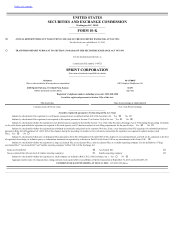 1
1 -
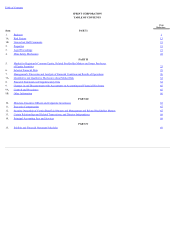 2
2 -
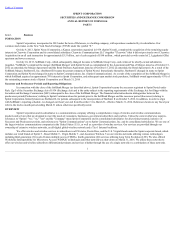 3
3 -
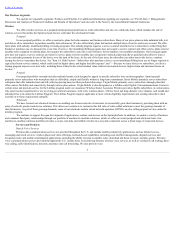 4
4 -
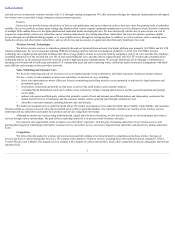 5
5 -
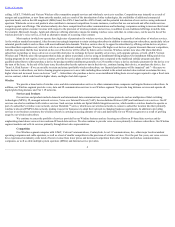 6
6 -
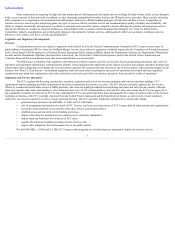 7
7 -
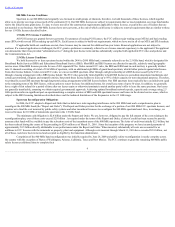 8
8 -
 9
9 -
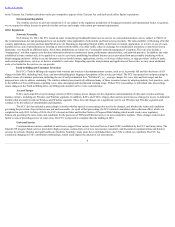 10
10 -
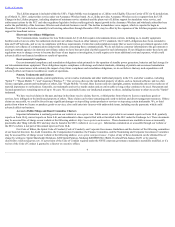 11
11 -
 12
12 -
 13
13 -
 14
14 -
 15
15 -
 16
16 -
 17
17 -
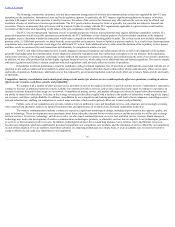 18
18 -
 19
19 -
 20
20 -
 21
21 -
 22
22 -
 23
23 -
 24
24 -
 25
25 -
 26
26 -
 27
27 -
 28
28 -
 29
29 -
 30
30 -
 31
31 -
 32
32 -
 33
33 -
 34
34 -
 35
35 -
 36
36 -
 37
37 -
 38
38 -
 39
39 -
 40
40 -
 41
41 -
 42
42 -
 43
43 -
 44
44 -
 45
45 -
 46
46 -
 47
47 -
 48
48 -
 49
49 -
 50
50 -
 51
51 -
 52
52 -
 53
53 -
 54
54 -
 55
55 -
 56
56 -
 57
57 -
 58
58 -
 59
59 -
 60
60 -
 61
61 -
 62
62 -
 63
63 -
 64
64 -
 65
65 -
 66
66 -
 67
67 -
 68
68 -
 69
69 -
 70
70 -
 71
71 -
 72
72 -
 73
73 -
 74
74 -
 75
75 -
 76
76 -
 77
77 -
 78
78 -
 79
79 -
 80
80 -
 81
81 -
 82
82 -
 83
83 -
 84
84 -
 85
85 -
 86
86 -
 87
87 -
 88
88 -
 89
89 -
 90
90 -
 91
91 -
 92
92 -
 93
93 -
 94
94 -
 95
95 -
 96
96 -
 97
97 -
 98
98 -
 99
99 -
 100
100 -
 101
101 -
 102
102 -
 103
103 -
 104
104 -
 105
105 -
 106
106 -
 107
107 -
 108
108 -
 109
109 -
 110
110 -
 111
111 -
 112
112 -
 113
113 -
 114
114 -
 115
115 -
 116
116 -
 117
117 -
 118
118 -
 119
119 -
 120
120 -
 121
121 -
 122
122 -
 123
123 -
 124
124 -
 125
125 -
 126
126 -
 127
127 -
 128
128 -
 129
129 -
 130
130 -
 131
131 -
 132
132 -
 133
133 -
 134
134 -
 135
135 -
 136
136 -
 137
137 -
 138
138 -
 139
139 -
 140
140 -
 141
141 -
 142
142 -
 143
143 -
 144
144 -
 145
145 -
 146
146 -
 147
147 -
 148
148 -
 149
149 -
 150
150 -
 151
151 -
 152
152 -
 153
153 -
 154
154 -
 155
155 -
 156
156 -
 157
157 -
 158
158 -
 159
159 -
 160
160 -
 161
161 -
 162
162 -
 163
163 -
 164
164 -
 165
165 -
 166
166 -
 167
167 -
 168
168 -
 169
169 -
 170
170 -
 171
171 -
 172
172 -
 173
173 -
 174
174 -
 175
175 -
 176
176 -
 177
177 -
 178
178 -
 179
179 -
 180
180 -
 181
181 -
 182
182 -
 183
183 -
 184
184 -
 185
185 -
 186
186 -
 187
187 -
 188
188 -
 189
189 -
 190
190 -
 191
191 -
 192
192 -
 193
193 -
 194
194 -
 195
195 -
 196
196 -
 197
197 -
 198
198 -
 199
199 -
 200
200 -
 201
201 -
 202
202 -
 203
203 -
 204
204 -
 205
205 -
 206
206 -
 207
207 -
 208
208 -
 209
209 -
 210
210 -
 211
211 -
 212
212 -
 213
213 -
 214
214 -
 215
215 -
 216
216 -
 217
217 -
 218
218 -
 219
219 -
 220
220 -
 221
221 -
 222
222 -
 223
223 -
 224
224 -
 225
225 -
 226
226 -
 227
227 -
 228
228 -
 229
229 -
 230
230 -
 231
231 -
 232
232 -
 233
233 -
 234
234 -
 235
235 -
 236
236 -
 237
237 -
 238
238 -
 239
239 -
 240
240 -
 241
241 -
 242
242 -
 243
243 -
 244
244 -
 245
245 -
 246
246 -
 247
247 -
 248
248 -
 249
249 -
 250
250 -
 251
251 -
 252
252 -
 253
253 -
 254
254 -
 255
255 -
 256
256 -
 257
257 -
 258
258 -
 259
259 -
 260
260 -
 261
261 -
 262
262 -
 263
263 -
 264
264 -
 265
265 -
 266
266 -
 267
267 -
 268
268 -
 269
269 -
 270
270 -
 271
271 -
 272
272 -
 273
273 -
 274
274 -
 275
275 -
 276
276 -
 277
277 -
 278
278 -
 279
279 -
 280
280 -
 281
281 -
 282
282 -
 283
283 -
 284
284 -
 285
285 -
 286
286 -
 287
287 -
 288
288 -
 289
289 -
 290
290 -
 291
291 -
 292
292 -
 293
293 -
 294
294 -
 295
295 -
 296
296 -
 297
297 -
 298
298 -
 299
299 -
 300
300 -
 301
301 -
 302
302 -
 303
303 -
 304
304 -
 305
305 -
 306
306 -
 307
307 -
 308
308 -
 309
309 -
 310
310 -
 311
311 -
 312
312 -
 313
313 -
 314
314 -
 315
315 -
 316
316 -
 317
317 -
 318
318 -
 319
319 -
 320
320 -
 321
321 -
 322
322 -
 323
323 -
 324
324 -
 325
325 -
 326
326 -
 327
327 -
 328
328 -
 329
329 -
 330
330 -
 331
331 -
 332
332 -
 333
333 -
 334
334 -
 335
335 -
 336
336 -
 337
337 -
 338
338 -
 339
339 -
 340
340 -
 341
341 -
 342
342 -
 343
343 -
 344
344 -
 345
345 -
 346
346 -
 347
347 -
 348
348 -
 349
349 -
 350
350 -
 351
351 -
 352
352 -
 353
353 -
 354
354 -
 355
355 -
 356
356 -
 357
357 -
 358
358 -
 359
359 -
 360
360 -
 361
361 -
 362
362 -
 363
363 -
 364
364 -
 365
365 -
 366
366 -
 367
367 -
 368
368 -
 369
369 -
 370
370 -
 371
371 -
 372
372 -
 373
373 -
 374
374 -
 375
375 -
 376
376 -
 377
377 -
 378
378 -
 379
379 -
 380
380 -
 381
381 -
 382
382 -
 383
383 -
 384
384 -
 385
385 -
 386
386 -
 387
387 -
 388
388 -
 389
389 -
 390
390 -
 391
391 -
 392
392 -
 393
393 -
 394
394 -
 395
395 -
 396
396 -
 397
397 -
 398
398 -
 399
399 -
 400
400 -
 401
401 -
 402
402 -
 403
403 -
 404
404 -
 405
405 -
 406
406
 |
 |

Table of Contents
band reconfigurations which, in turn, delays our access to our 800 MHz replacement channels in these areas. In the areas where band reconfiguration is complete,
Sprint has received its replacement spectrum in the 800 MHz band and Sprint is deploying 3G CDMA and 4G LTE on this spectrum in combination with its
spectrum in the 1.9 GHz and 2.5 GHz bands.
911 Services
Pursuant to FCC rules, CMRS providers, including us, are required to provide enhanced 911 (E911) services including, depending upon the capabilities
of the requesting public safety answering point (PSAP), the location of the cell site from which the call is being made or the location of the subscriber's handset
using latitude and longitude. CMRS providers are also now required to provide text-to-911 services upon request by a capable PSAP. The FCC recently revised the
location accuracy standards for the provision of wireless 911 services indoors and these requirements may impose additional obligations.
Cybersecurity
Cybersecurity continues to receive attention at the federal, state and local levels. Congress has passed and continues to consider various forms of
cybersecurity legislation to increase the security and resiliency of the nation's digital infrastructure. In addition, over the past few years the President has issued
executive orders directing the Department of Homeland Security and other government agencies to take a number of steps to improve the security of the nation's
critical infrastructure. Additionally, the Communications Security, Reliability and Interoperability Council approved Cybersecurity Risk Management and Best
Practices, a report providing the communication industry guidance in using the National Institute of Standards and Technology Cybersecurity Framework.
Implementation of these guidelines or the adoption of further cybersecurity laws or regulation may impose additional costs on Sprint. See "Item 1A. Risk Factors—
Our reputation and business may be harmed and we may be subject to legal claims if there is a loss, disclosure, misappropriation of, unauthorized access to, or
other security breach of our proprietary or sensitive information ."
National Security Agreement
As a precondition to CFIUS approval of the SoftBank Merger, the USG Parties required that SoftBank and Sprint enter into the NSA, under which
SoftBank and Sprint have agreed to implement certain measures to protect national security, certain of which may materially and adversely affect our operating
results due to the increased cost of compliance with security measures, and limits over our control of certain U.S. facilities, contracts, personnel, vendor selection
and operations. If we fail to comply with our obligations under the NSA our ability to operate our business may be adversely affected. See "Item 1A. Risk Factors
—Regulatory authorities have imposed measures to protect national security and classified projects as well as other conditions that could have an adverse effect on
Sprint."
State and Local Regulation
While the Communications Act generally preempts state and local governments from regulating entry of, or the rates charged by, wireless carriers,
certain state PUCs and local governments regulate customer billing, termination of service arrangements, advertising, certification of operation, use of handsets
when driving, service quality, sales practices, management of customer call records and protected information and many other areas. Also, some state attorneys
general have become more active in bringing lawsuits related to the sales practices and services of wireless carriers. Varying practices among the states may make
it more difficult for us to implement national sales and marketing programs. States also may impose their own universal service support requirements on wireless
and other communications carriers, similar to the contribution requirements that have been established by the FCC, and some states are requiring wireless carriers
to help fund additional programs, including the implementation of E911 and the provision of intrastate relay services for consumers who are hearing impaired. We
anticipate that these trends will continue to require us to devote legal and other resources to work with the states to respond to their concerns while attempting to
minimize any new regulation and enforcement actions that could increase our costs of doing business.
Regulation and Wireline Operations
Competitive Local Service
The Telecommunications Act of 1996 (Telecom Act), which was the first comprehensive update of the Communications Act, was designed to promote
competition, and it eliminated legal and regulatory barriers for entry into local and long distance communications markets. It also required incumbent local
exchange carriers (ILECs) to allow resale of specified local services at wholesale rates, negotiate interconnection agreements, provide nondiscriminatory access to
certain unbundled network elements and allow co-location of interconnection equipment by competitors. The rules implementing the Telecom Act continue to be
interpreted by the courts, state PUCs and the FCC , and Congress is considering possible changes
7
